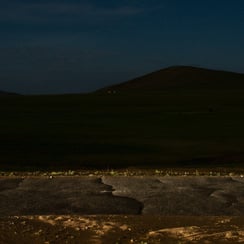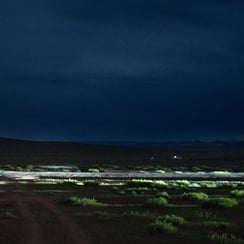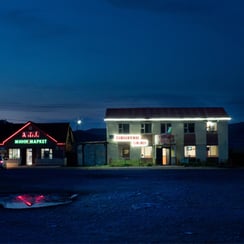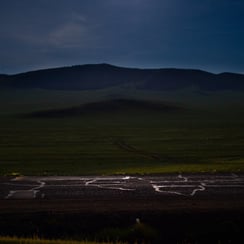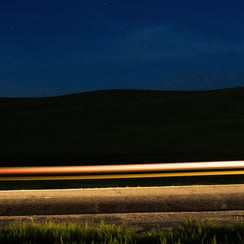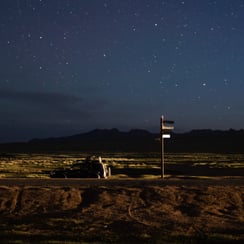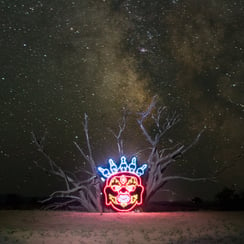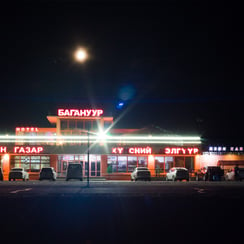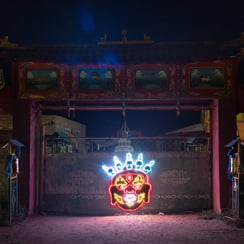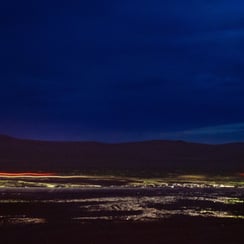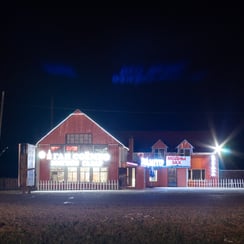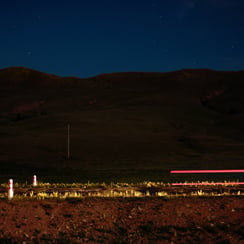"Salvation, Mongolian Highway" documents a 5-foot-by-5-foot LED sculpture of the Buddhist deity Begtse intervening in existing landscapes and structures in the Mongolian countryside. The Mongolian highway, rolling through vast darkness for hundreds of miles at a time, is punctuated intermittently with small roadside towns lit up with bright LED lights. The blazing signs advertise food, rest, karaoke—signs that provide some salvation from the dark. This project imagines a future where Mongolian Buddhist monasteries also signify themselves with LED signs.
Salvation, Mongolian Highway
In collaboration with O. Myagmadorj and N. Bayartugs
2020
exhibited virtually with New Dominion Books, Charlottesville, VA
